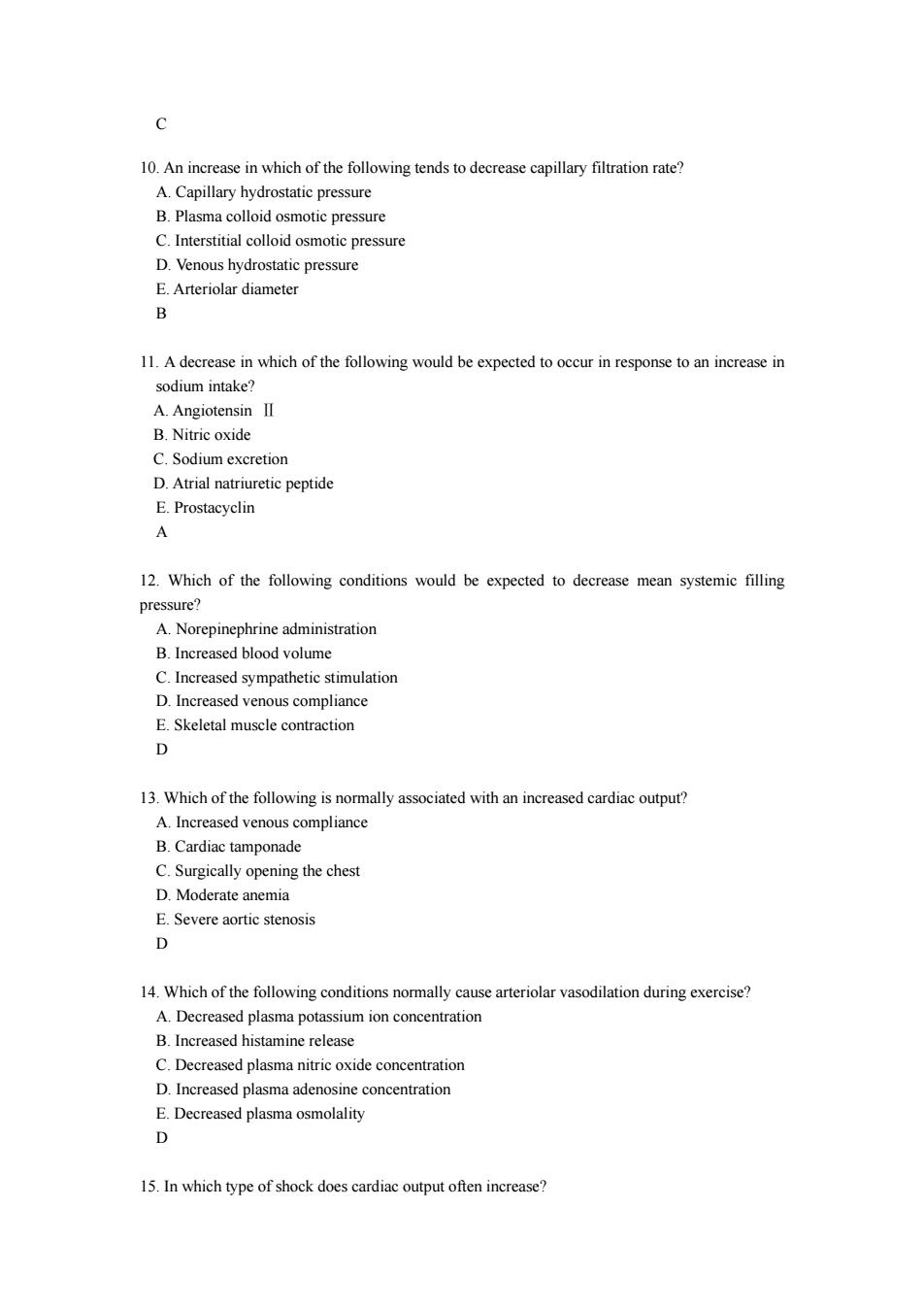正在加载图片...

c 10.An increase in which of the following tends to decrease capillary filtration rate? A.Capillary hydrostatic B.Plasma C.Interstitial colloid osmotic pressure D.Venous hydrostatic pressure E.Arteriolar diameter B 11.A decrease in which of the following would be expected tooccur in response to an increase in sodium intake? A Angiotensin II B.Nitric oxide C.Sodium excretion D.Atrial atriuretic peptide E.Prostacyclin A 12.Which of the following conditions would be expected to decrease mean systemic filling ure? A.Norepinephrine administration B.Increased blood volume C.Increased sympathetic stimulatior D.Increased venous compliance E.Skeletal muscle contraction D 13.Which of the following is normally associated with an increased cardiac output? A.Increased venous compliance B.Cardiac tamponade C.Surgically open ng the ches D.Moderate anemia E.Severe aortic stenosis D 14.Which of the vasodilation A.Decreased plasma potassium ion concentration B.Increased histamine release C.Decreased plasma nitric oxide concentration D.Increased plasma adenosine concentration E.Decreased plasma osmolality D 15.In which type of shock does cardiac output often increase?C 10. An increase in which of the following tends to decrease capillary filtration rate? A. Capillary hydrostatic pressure B. Plasma colloid osmotic pressure C. Interstitial colloid osmotic pressure D. Venous hydrostatic pressure E. Arteriolar diameter B 11. A decrease in which of the following would be expected to occur in response to an increase in sodium intake? A. Angiotensin Ⅱ B. Nitric oxide C. Sodium excretion D. Atrial natriuretic peptide E. Prostacyclin A 12. Which of the following conditions would be expected to decrease mean systemic filling pressure? A. Norepinephrine administration B. Increased blood volume C. Increased sympathetic stimulation D. Increased venous compliance E. Skeletal muscle contraction D 13. Which of the following is normally associated with an increased cardiac output? A. Increased venous compliance B. Cardiac tamponade C. Surgically opening the chest D. Moderate anemia E. Severe aortic stenosis D 14. Which of the following conditions normally cause arteriolar vasodilation during exercise? A. Decreased plasma potassium ion concentration B. Increased histamine release C. Decreased plasma nitric oxide concentration D. Increased plasma adenosine concentration E. Decreased plasma osmolality D 15. In which type of shock does cardiac output often increase?